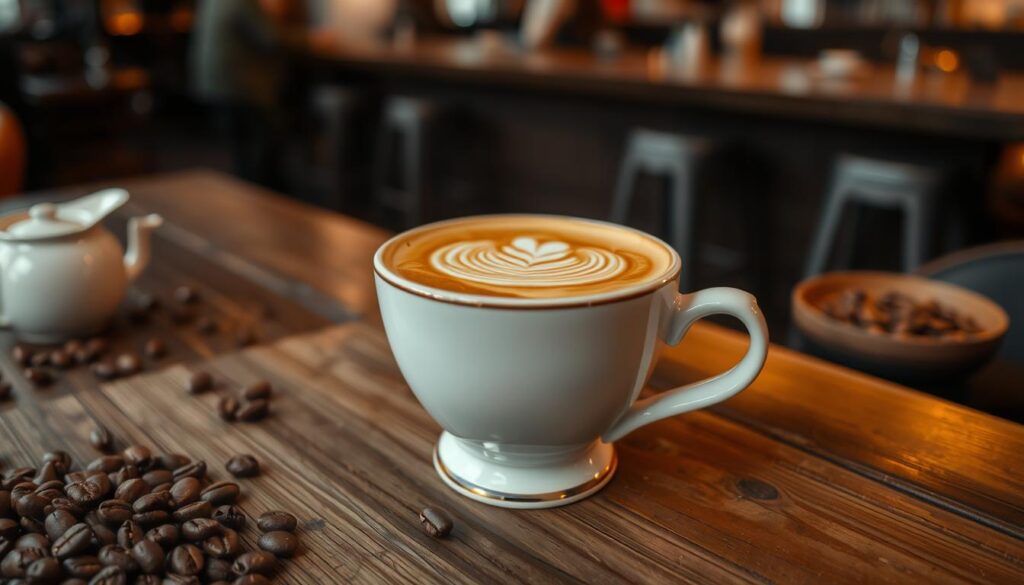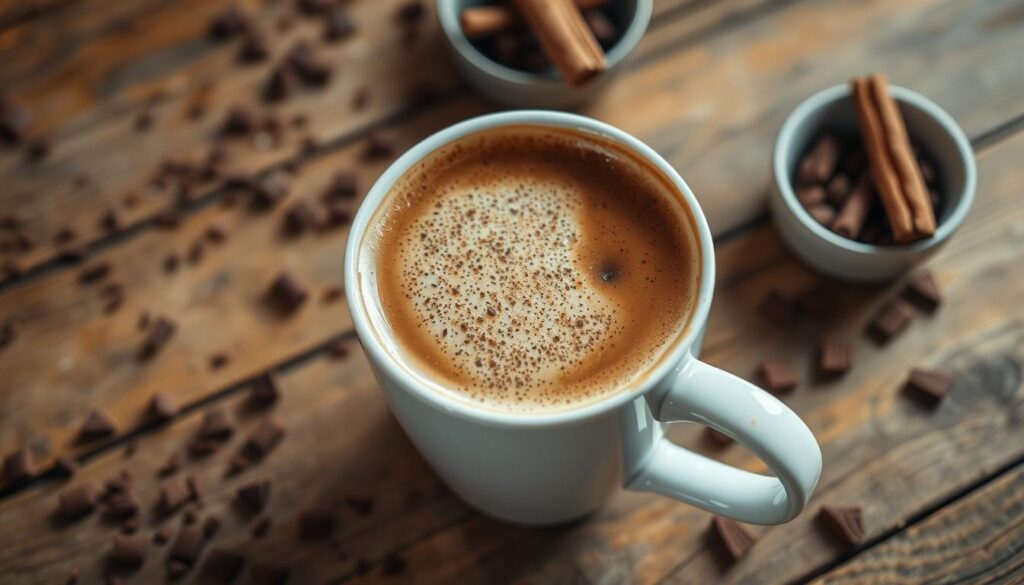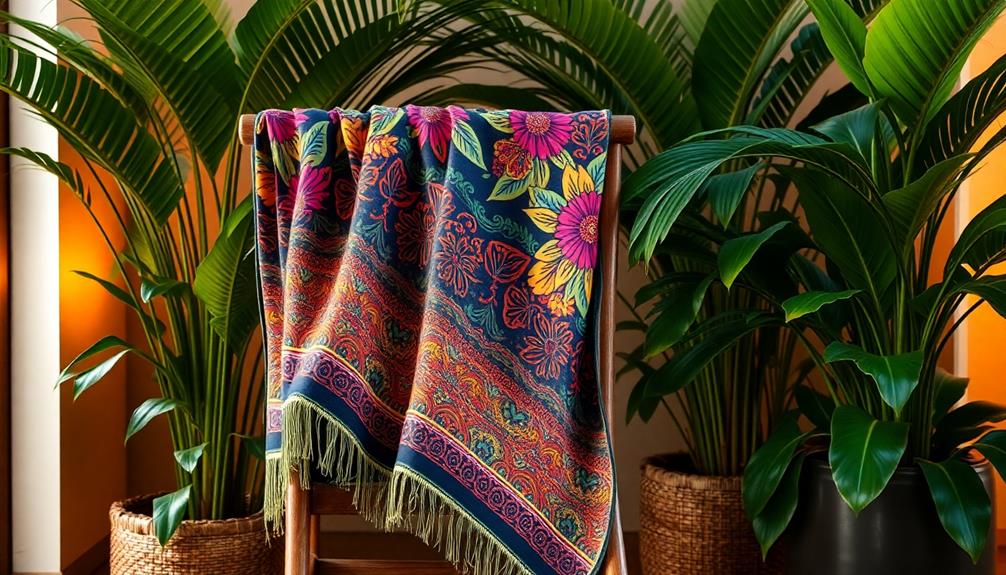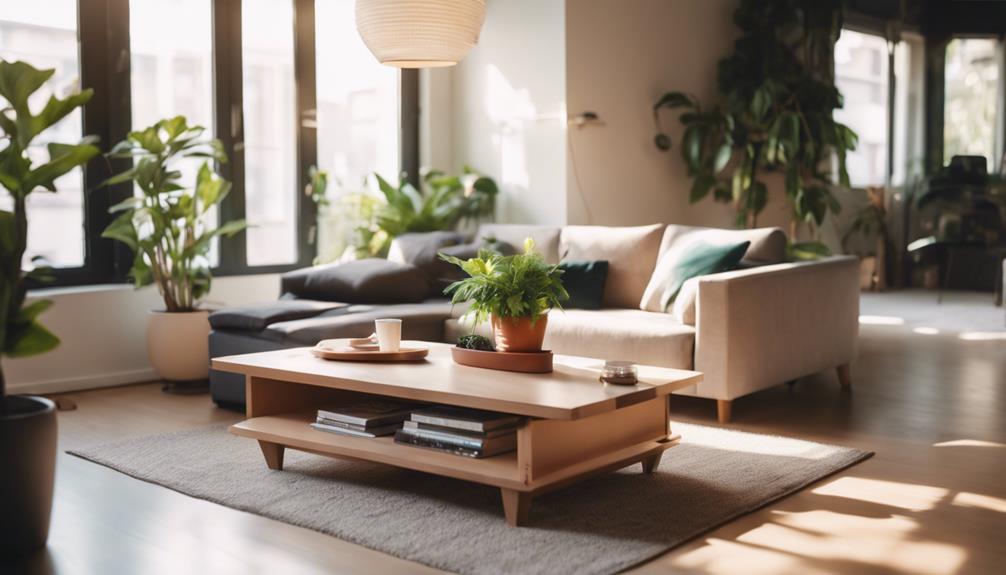When you step into your favorite cafe, the delightful aroma of coffee surrounds you. The barista warmly welcomes you. You are presented with a variety of tempting options on the menu. One noteworthy choice is the bone dry cappuccino. It’s a coffee enthusiast’s dream, elevating the traditional cappuccino to a new level. For those craving a perfect balance of boldness and comfort, look no further. The bone dry cappuccino emphasizes the rich espresso flavor, topped with a light and frothy foam. This article will explore what sets a bone dry cappuccino apart. We will examine its unique characteristics and how it differs from other cappuccinos. We encourage you to try crafting one at home to enhance your coffee-making skills.
Key Takeaways
- The bone dry cappuccino contains only espresso and foam, making it a bolder option for coffee enthusiasts.
- Unlike standard cappuccinos, a bone dry cappuccino has no steamed milk, resulting in fewer calories.
- This variation focuses solely on the rich flavor of espresso, perfect for those who crave intensity in their coffee.
- Making a bone dry cappuccino at home requires an espresso machine with a steam wand for frothing.
- Exploring cappuccino variations like the bone dry cappuccino can elevate your coffee experience significantly.
- The foam in a bone dry cappuccino acts as an insulating layer, enhancing both temperature and taste.
- Understanding the differences between cappuccino types can help you make more informed choices at your local café.
Introduction to Cappuccino Varieties
Cappuccinos vary to suit different tastes. A traditional one mixes equal parts of espresso, steamed milk, and foam. This mix offers a balanced flavor. Besides the classic, there are wet, dry, super wet, and bone dry cappuccinos. Each one changes the recipe to highlight specific flavors and textures. For example, a dry cappuccino has more foam and less milk. This lets the strong espresso taste stand out.
The type of cappuccino you choose changes the flavor experience. A wet cappuccino has more steamed milk, making it creamier. Conversely, dry cappuccinos are thicker and smoother because they have less milk. They suit those who like a bolder taste. The bone dry variant goes further, having only espresso and a thick foam layer, no milk.
Digging into these coffee drinks shows how slight tweaks in ingredients make unique espressos. This knowledge helps in picking the perfect cup to match your taste.
What is a Cappuccino?
The cappuccino is a popular coffee drink known for its unique flavor and creamy texture. It originated from Italy, gaining popularity worldwide. A sip of cappuccino brings together a delightful blend of elements.
Basic Components of Cappuccino
A cappuccino consists of three main cappuccino components: espresso, steamed milk, and milk foam. Each plays a key role:
- Espresso: Provides a strong coffee base.
- Steamed Milk: Adds creaminess and balances the espresso. Usually, it’s about 2 to 4 ounces.
- Milk Foam: Gives a fluffy texture on top. The espresso-to-milk ratio is nearly 1:1, making the drink rich and light.

Historical Significance of Cappuccino
Cappuccino history dates back to the 1700s, showing how it has changed over time. People first loved it for its unique espresso and milk combo. As tastes changed, the cappuccino adapted, proving its lasting appeal. Learning about its history makes us appreciate cappuccino even more.
Understanding Dry Cappuccino
A dry cappuccino is a special kind of coffee. It has more milk foam and less steamed milk than a regular cappuccino. This makes the coffee taste stronger and the texture different. It’s a favorite for those who love a unique coffee experience.
Characteristics of a Dry Cappuccino
The dry cappuccino is known for these things:
- Higher Milk Foam Ratio: It’s very foamy, giving it a light feel.
- Minimal Steamed Milk: Less milk lets the espresso’s taste shine through.
- Preparation Time: It takes more time to get the foam just right.
- Customization: You can choose different milks, like oat or soy, if you don’t want dairy.
- Flavor Enhancements: You can add flavors or sweeteners to make it yours.
Comparing Dry Cappuccino to Standard Cappuccino
Comparing the two, there are clear differences:
| Feature | Dry Cappuccino | Standard Cappuccino |
|---|---|---|
| Milk Foam Ratio | High, minimal steamed milk | Equal parts espresso, steamed milk, and foam |
| Flavor Profile | Bolder espresso flavor | Creamy with balanced flavors |
| Typical Preparation Time | Longer due to foam requirements | Standard preparation time |
| Customization Options | Multiple milk and flavor choices | Equal customization opportunities |

Learning about these coffee types makes your coffee experience better. Whether you like a strong dry cappuccino or a creamy standard one, each offers a special taste of espresso world.
Bone Dry Cappuccino Meaning: What Sets It Apart
The bone dry cappuccino stands out for those who love coffee. It is known for its bold flavors and unique texture. Unlike other cappuccinos, it focuses on espresso. This gives it a concentrated flavor, making it a special twist on the usual coffee drink. Learning about the bone dry cappuccino can help you enjoy this drink even more. Additionally, the bone dry cappuccino is often enjoyed by those who prefer a stronger caffeine kick. The name itself, “bone dry,” adds to the allure of this coffee as it conveys a sense of intensity and boldness. Understanding the symbolism behind batik patterns can also enrich the experience of sipping on a bone dry cappuccino, as both offer a sensory journey that delights and stimulates the senses.
Defining the Bone Dry Cappuccino
This cappuccino has no steamed milk at all. It is all about the thick dry foam on top of strong espresso. This makes the coffee’s taste stronger and the feel smoother than other types. People who like a bold coffee taste find it rewarding and enjoyable.
How Bone Dry Differs from Other Variations
The bone dry and other cappuccinos are quite different. The bone dry skips steamed milk for more espresso and dense foam. This change boosts the flavor and makes the drink special. It’s perfect for those who love espresso’s thick and rich texture.

| Type of Cappuccino | Espresso | Steamed Milk | Foam | Flavor Experience |
|---|---|---|---|---|
| Bone Dry Cappuccino | Prominent | None | Dense and Thick | Strong Coffee Flavor |
| Dry Cappuccino | Prominent | Minimal | Fluffy | Moderate Coffee Flavor |
| Standard Cappuccino | Balanced | Equal | Velvety | Balanced Coffee and Milk Flavor |
This comparison highlights what makes each cappuccino type unique. It shows why the bone dry cappuccino is a top pick for those wanting a deep coffee flavor.
How to Make a Bone Dry Cappuccino at Home
Creating a bone dry cappuccino at home is fun. You need the right steps and knowledge of its ingredients. This will help you make a coffee that has strong espresso and lots of foam. Just follow these steps to make your espresso great and enjoy a fancy cup at home.
Ingredients Required
- 18 grams of high-quality Arabica or Robusta coffee beans
- 2 ounces of filtered water
- Whole milk (for a richer foam) or skim milk (for lighter foam)
- Optional: spices like cardamom or nutmeg for flavor infusion
Step-by-Step Preparation Guide
- Start by measuring 18 grams of coffee beans. Grind them right before you brew for the best taste.
- Press the coffee grounds evenly in the portafilter for the best coffee extraction.
- Make a shot of espresso, aiming for 20 to 30 seconds of brew time. This gives you around 2 ounces of strong espresso.
- While making your espresso, froth cold milk at an angle in a pitcher. This method is great for making microfoam. Froth until it’s foamy, which should take 20-25 seconds. The milk should reach about 150°F (65°C).
- You can add spices to the milk before frothing if you want extra flavors.
- After frothing, put a thick layer of milk foam on the espresso. Try to only add foam, not the steamed milk.
- Now, enjoy your homemade bone dry cappuccino. Relish the mix of strong espresso and creamy foam.

Tasting Notes: What to Expect from Bone Dry Cappuccino
Trying a bone dry cappuccino is a unique journey for your taste buds. Its flavor is deep, focusing on strong espresso with barely any milk. It combines a rich espresso shot with a thick, creamy foam layer on top. This mix brings an intense, full taste that true coffee lovers will enjoy.

Flavor Profile and Texture
A bone dry cappuccino offers a one-of-a-kind coffee texture. The frothy foam on top makes every sip feel smooth and indulgent. Using whole milk gives the foam a richer feel, adding to the luxury. By heating the milk to about 150°F (65°C), the foam gets silky. This perfects its match with the espresso’s boldness.
Comparison with Other Cappuccino Types
Bone dry cappuccinos stand out next to traditional and wet cappuccinos. While classic cappuccinos mix espresso with steamed milk and foam evenly, they are creamier. On the other hand, bone dry cappuccinos skip the milk. This choice lets the espresso shine, offering a stronger flavor. This means they cater to those who prefer their coffee focused on espresso.
| Cappuccino Type | Espresso | Steamed Milk | Milk Foam | Flavor Profile |
|---|---|---|---|---|
| Traditional Cappuccino | Single or Double | Yes | Yes | Balanced, Creamy |
| Bone Dry Cappuccino | Single or Double | No | Yes | Intense, Espresso-focused |
| Wet Cappuccino | Single or Double | More than traditional | Yes | Rich, Very Creamy |
Why Choose a Bone Dry Cappuccino?
A bone dry cappuccino offers a special blend of taste and health perks for coffee fans. If you love the deep, rich flavors of espresso, this could be the drink for you. It has few ingredients, providing a simple coffee experience. It keeps the strong taste of espresso and adds health benefits.
Health Benefits and Caloric Content
The caloric content of a bone dry cappuccino is low, about 100 calories. It’s just espresso and milk foam, without the extra calories from sweeteners or creamers. This choice is great if you’re watching your calorie count. The health benefits of coffee include helpful antioxidants. They can help with digestion and heart health. This coffee fits well in a healthy diet.
Perfect for Espresso Lovers
If you love the strong flavor of espresso, the bone dry cappuccino is perfect. With no steamed milk, the espresso’s bold taste stands out. You can enjoy your coffee neat or with a little foam. This choice is popular among those who seek pure espresso flavor in their coffee.

| Type of Cappuccino | Caloric Content | Main Ingredients | Flavor Profile |
|---|---|---|---|
| Classic Cappuccino | Approx. 120-150 | Espresso, Steamed Milk, Milk Foam | Creamy with a balanced coffee flavor |
| Bone Dry Cappuccino | Approx. 100 | Espresso, Milk Foam | Bold and intense espresso flavor |
| Wet Cappuccino | Approx. 140-160 | Espresso, More Steamed Milk, Milk Foam | Sweeter and creamier |
Cultural Impact and Popularity
The bone dry cappuccino has become a favorite in coffee shops. It shows a big change in coffee culture. More people are trying this unique style, making it more popular.
This trend shows how coffee can be different. It encourages people to try new tastes.
Bone Dry Cappuccino in Coffee Shops
Many coffee places now offer the bone dry cappuccino as a special item. Baristas often recommend this drink to those wanting to try something new. It’s made just with espresso and milk foam, appealing to those who like strong coffee.
This trend shows people are more interested in coffee quality and taste. They prefer this over the usual coffee drinks.
Trends in Coffee Culture
The growing coffee culture makes specialty drinks like the bone dry cappuccino more popular. This shift matches what consumers want: drinks made just for them. They’re looking for unique coffee experiences.
Discovering these trends can introduce you to exciting flavors. It’s a fun way to explore coffee culture.

Conclusion
The bone dry cappuccino is a special twist on a classic drink. It’s great for those who love strong coffee flavors. The way it’s made brings out the deep tastes in espresso without too much milk. This makes the bone dry cappuccino a top pick for coffee lovers.
Exploring this guide helps you get more out of this unique drink. You learn the skill behind making a bone dry cappuccino. Its frothy foam and bold taste turn each sip into a joy.
Coffee culture is always changing, with new trends popping up. Yet, the bone dry cappuccino remains a standout choice. Next time you’re at a coffee shop, try this drink that showcases the creativity in today’s coffee scene.









